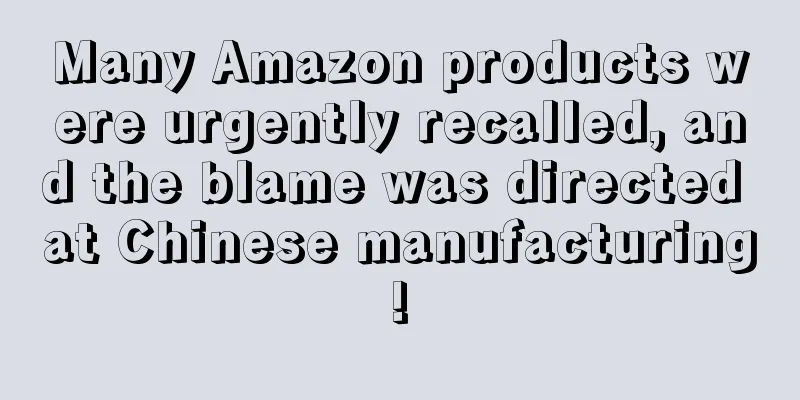TEMU cancels freight subsidies, can Pinduoduo no longer bear it?

|
In September, TEMU was launched quietly; in October, it made a splash on the US shopping app list; in November, it topped the US shopping app download list for consecutive months, with 6 million installations, more than the second-ranked Walmart and the third-ranked Amazon combined; in just three months, TEMU successfully captured the wallets of North American consumers with its low prices, social fission and 10 billion subsidies.
Backed by Pinduoduo and taking advantage of North American consumers, TEMU has also attracted a large number of Chinese sellers, including some of the top sellers such as Huakai Yibai. However, recently, TEMU’s policy of “cancelling shipping subsidies” has discouraged a number of sellers who want to join, and some sellers who have already joined are facing the dilemma of whether to raise prices to protect profits.
At the same time, the war between TEMU and SHEIN is intensifying. They are competing for users, suppliers, and markets. The two leading platforms relying on China's supply chain advantages are staging a big drama overseas.
TEMU cancels freight subsidies, sellers say profits cut in half
"Starting from 0:00 on December 12, the non-JIT (pre-sale model) delivery costs of merchants will be borne by the merchants and the platform at 50% each." A seller sent a notice from the waiter in the TEMU group.
Judging from the content of the notice, TEMU's freight policy adjustment is only for VMI (Very Goods In-Warehouse Model) sellers . In this model, the seller first ships the goods to the TEMU warehouse, and the platform bears this part of the cost. The products are sold after arriving at the warehouse, and the platform is also responsible for overseas logistics and transportation issues.
The logistics costs of this policy change are mainly for the part that sellers ship to TEMU warehouses. Specifically, for expedited goods that need to be sent by SF Express, sellers need to bear 50% of the normal logistics pricing, and the platform will fully bear 50% of the normal logistics pricing and the additional shipping costs for SF Express expedited delivery.
As soon as the word "consumption" came out, the sellers' group went wild. "Most of the quotations have been reduced to only a few cents, and now they are directly cut in half. Are they going to completely squeeze out the profits?" said a seller. He guessed that there might be a wave of leeks cut, but he didn't expect it to happen so early. Some sellers who wanted to settle in said frankly that they were originally planning to settle in and give it a try, but were directly discouraged.
In fact, there was news that the platform was going to adjust the shipping fee. At that time, a platform clerk issued a notice, saying that the platform would reduce the proportion of shipping fees for non-hot products, hoping that sellers would ship the goods as soon as possible to seize the last wave of free shipping dividends from the platform. However, at that time, the platform did not clarify the specific adjustment strategy and adjustment time. Now it seems that this policy is becoming clearer.
In response to TEMU's move, some sellers said frankly that this kind of operation by the platform is not uncommon at all. Some platforms have also risen in this way before. However, for sellers with multi-platform layout, it can only be used as a channel to clear inventory in a short period of time. Although sellers have their own stores on the platform, they are still positioned as platform suppliers and do not have the pricing power at the front desk . In addition, TEMU keeps lowering prices. In the long run, the same product is sold on two different platforms, and the average customer price is very different, which is equivalent to giving away their main profit platform.
Sellers do not need to bear logistics costs, which can effectively reduce product prices, but can this model be sustained for a long time? Obviously, TEMU's move tells us that it is impossible, and there may even be a wave of price increases.
Once the TEMU logistics subsidy policy is implemented, the freight will be transferred to the sellers, and the sellers with low-value goods will be the most hurt. The editor learned that some TEMU sellers who sell low-value goods are already considering that if the policy is implemented later, they will need to bear a certain proportion of the shipping costs, and they will negotiate with buyers to raise prices, clear out products with low profits, and stop selling them.
Industry insiders have given their own suggestions: On the TEMU platform, if the cost of the product sold is less than 10 yuan , the profit must be at least 3-4 yuan; if the cost is more than 10 yuan, don't do it if the profit is less than 5 yuan. "If there is no profit and only orders, don't do charity." One seller said bluntly.
There is no doubt that TEMU is using traffic and data to outline a more attractive future for sellers, but for sellers, it is not so easy to get a share of the platform's cake through TEMU. TEMU has completed the preliminary blind test. After the blind test, sellers will face more intense competition challenges.
At the same time, many sellers are also thinking about a problem, that is, everyone is rushing to join TEMU to get the initial dividends, but when the dividends fade and various marketing subsidies end, how much traffic can the platform retain and how much profit can they make.
When you think that the cancellation of 50% shipping subsidy has hurt a large number of sellers, the reality will tell you that it is far more than that. Some category clerks have already made a notice about shipping subsidy, that is, in the later stage, the platform may cancel all subsidies, and the sellers will bear all shipping costs.
Or completely cancel shipping subsidies. Is it to screen sellers or Pinduoduo can no longer bear it?
This news undoubtedly deepened the determination of some sellers to leave TEMU, and also shook the idea of sellers who wanted to settle in the platform. According to the sellers, the pricing required for settlement on the TEMU platform is much lower than that of platforms such as Amazon, but when the platform completely cancels the logistics subsidy, this part of the logistics costs will naturally be passed on to the sellers, and the sellers are faced with the problem of maintaining profits.
But as the saying goes, no one wants to do business at a loss. Some sellers will raise prices to protect their profits, while others may choose to clear their inventory and leave. "Our supply chain is not that strong, and we are under great financial pressure. We are preparing to exit the market slowly," said a small seller. For new sellers, price increases will be extremely stressful. If the price of similar products is higher than others, the chance of not being able to sell them will naturally increase . At the same time, the capital requirements for sellers will also increase, and it is estimated that a number of middlemen will fall.
Earlier, they focused on sales and ratings, and now they are canceling logistics subsidies. It is hard not to wonder whether TEMU is "clearing out" some players in disguise.
In some seller groups, we can find that TEMU sellers are the partners sought by many manufacturers, who want to clear their warehouses and reduce inventory pressure through this channel. However, for many sellers operating on the platform, they have already felt the chill, because the platform is using some strategies to screen high-quality sellers .
First, the platform is emphasizing sales and ratings. Some sellers said that they have received reminders from Pinduoduo officials, asking sellers to pay attention to sales and ratings. Once unqualified or non-compliant situations occur, the platform is very likely to remove the product directly.
In terms of sales, for slow-moving products with no sales in 14 days or sales of less than 30 pieces/90 USD in 30 days, TEMU provides two options: one is to reduce the price, and the other is to withdraw from supply; in terms of product rating, if the rating is lower than 4.5 points, and there are 1-star reviews about quality issues in the product reviews, the platform will most likely remove the product.
Second, the platform has raised the requirements for product delivery and quality. Some sellers have reported that TEMU currently has very strict requirements for product selection in some categories, with a pass rate of less than 15%. To enter, you must provide high-quality and extremely low-priced products. At the same time, in order to ensure the quality of product delivery, the platform will strictly check labels such as barcodes and warnings. If the product lacks such information, the platform will require the seller to use the official processing warehouse service, but the fee is high and there will be a tiered billing situation.
For some sellers who sell at low prices and high volumes, using the platform's processing warehouse means that their profits are squeezed, and they may even suffer losses. Under such circumstances, sellers can only avoid this cost by continuously improving their service and product quality.
Third, the platform is introducing some high-quality brand sellers. Earlier, Huakai Yibai said that it had opened a small number of stores on TEMU, and it may continue to expand its layout on the platform in the future following the platform's strategy. In fact, it is not just Amazon's big sellers like Huakai Yibai, but also many Chinese brands are quietly entering TEMU, such as the well-known domestic brands Lenovo and NOVO.
For compliant and high-quality brand products, TEMU will also provide additional traffic support. By logging into the TEMU official website, we can find that consumers can already view detailed data such as brand stores, ratings, and sales through search. For strong sellers, the products will also get a greater degree of exposure on the platform, and at the same time, they can also get a good brand promotion.
In addition, many people believed that TEMU's move to cancel freight subsidies meant that Pinduoduo could no longer bear it.
In Pinduoduo's Q3 financial report, its marketing expenses amounted to 14.05 billion yuan, a 24% increase from last year's marketing expenses of around 11 billion yuan. Industry insiders generally believe that the increase in Pinduoduo's marketing expenses is related to TEMU.
At that time, industry insiders also said that due to the large-scale discount activities, TEMU had to subsidize $30 for each order. Of course, there were also more than 1,600 advertisements on Facebook and advertising expenses on other platforms.
Therefore, many people believe that TEMU canceled the logistics subsidy because Pinduoduo could no longer bear the huge expenses of TEMU. However, in fact, this is not true. According to media reports, in 2023, Pinduoduo has a deeper layout for TEMU, plans to let it enter the Canadian and Spanish markets, and has given it a marketing budget of 7 billion yuan a year.
Obviously, Pinduoduo is planning a bigger layout. Earlier, Pinduoduo also put TEMU ahead of the main site, which shows that Pinduoduo has regarded it as another growth curve. Many sellers agree that, like other platforms, TEMU is just a step to screen high-quality sellers, and this move is to lay the foundation for grabbing more market share in the future.
It is understood that TEMU has currently occupied a relatively high base overseas, and many sellers also use it as another option for their multi-platform layout, but SHEIN, which is also an overseas platform, is its biggest competitor. In the eyes of sellers, the two capture the same wave of users and the same market, and are backed by China's powerful supply chain. They are inevitably compared, and a war without gunpowder is starting overseas.
TEMU's monthly downloads are three times that of SHEIN. Who will win in the overseas battle?
In the recent ranking of U.S. shopping app downloads in November released by Appfigures, Amazon, which used to be at the top of the list, has fallen several places. TEMU, which was launched in September, is the most downloaded shopping app in the United States that month, with more than 6 million downloads , far exceeding Walmart, which ranks second, and Amazon, which ranks third, and is even three times that of SHEIN.
The rapid development of TEMU has also made many sellers see the shadow of SHEIN. However, in the eyes of many sellers, TEMU is more like the plus version of SHEIN, because SHEIN and TEMU have many similarities: both are backed by China's strong supply chain, both focus on the low-price market, both are expanding all categories, and both are exploring new markets. In the future, the two are bound to have more intense competition.
When SHEIN first launched, it only provided a number of coupons for new users, and most of the coupons were 20% off; while TEMU first launched a variety of ways to attract users, such as 30% off coupons, discount areas, and $0.01 flash sales. At the same time, TEMU has not given up its strategy of cutting prices in China.
If you compare carefully, you can find that TEMU's products are generally cheaper than SHEIN's, and the discounts they offer are also bigger. TEMU's current Pinduoduo-style strategy also works well in the North American market. I don't know if it was influenced by TEMU, but now when you open SHEIN's official website, you can also find a lot of promotional information.
Although SHEIN previously focused on women's clothing, it has now expanded to beauty, home furnishings, kitchen and bath products, and pet products, and is transforming into a full-category e-commerce platform. In order to grab users, SHEIN has also launched some small household goods priced below $10. When TEMU was first launched, the platform sold all categories including electronic equipment, home furnishings, women's clothing, shoes and bags, etc., grabbing users at low prices.
However, in terms of product quality, many consumers are not optimistic about the products of the two platforms. After purchasing products from the two platforms, some consumers came to the conclusion that SHEIN's products have recently increased in price, but the quality has not improved significantly . Among the multiple products purchased, nearly half were unsatisfactory. The same is true for TEMU. However, for consumers, due to the low price of TEMU, they will not consider returning the products, but will be more cautious in future purchases.
TEMU also seems to be aware of the problem of product quality. In order to ensure product quality, it has continuously made adjustments to the rules. After updating the return rules, consumers can return products free of charge without reason within 90 days.
In the competition for suppliers, SHEIN and TEMU are even more fierce. It is reported that as early as May this year , Pinduoduo moved its supply chain employees to Panyu, Guangzhou. It should be noted that Guangzhou Panyu is the headquarters of SHEIN, and there are thousands of platform suppliers gathered here.
SHEIN also regards TEMU as a heavyweight competitor and has made internal requirements for some core suppliers, not to supply to two platforms at the same time, but to choose only one. Industry insiders revealed that SHEIN did not explicitly prohibit suppliers from supplying to other platforms before , but TEMU is an exception . Two companies have been fined by SHEIN for cooperating with two platforms at the same time.
Although the platform has repeatedly warned against this, many suppliers are still attracted by the conditions offered by TEMU, such as zero deposit for entry, exemption from merchant operation and logistics costs, and shorter payment cycles for suppliers. Therefore, some suppliers will cooperate with TEMU by registering new companies and not using the SHEIN model.
But in contrast, it can be found that TEMU seems to have more homework to do. As we all know, SHEIN has already built its own private domain traffic through mainstream overseas social media platforms such as Facebook, Instagram, and YouTube in the early days, completing the original accumulation of capital.
But nowadays, TEMU relies almost entirely on early discounts and various benefits to compete for users. Industry insiders estimate that TEMU's customer acquisition cost is US$5-10, while SHEIN's customer acquisition cost is only half of TEMU's, and SHEIN's early original accumulation has allowed SHEIN to accumulate more than half of its natural traffic.
As we all know, the cost of logistics and distribution in the United States is relatively high. This part of the cost expenditure has also overwhelmed many platforms, and they have chosen to build their own logistics. SHEIN has taken the lead and has established its first distribution center warehouse in the United States, and it is expected to increase to 3 in the future. However, TEMU has not established an overseas warehouse, but only relies on the cross-border warehouse set up in the mainland. Its trunk transportation and destination delivery are all dependent on third parties, and the arrival time is generally about 5-15 days. In order to improve consumers' shopping experience, TEMU is more likely to be subject to third-party logistics.
At present, the TEMU platform implements one-click returns, but the fulfillment costs behind this are very high. Some industry insiders believe that this part of the cost is likely to exceed the subsidy cost . At the beginning of the article, we mentioned that TEMU will cancel the logistics subsidy, which means that the logistics costs will be passed on to the sellers, which will directly lead to a general increase in product prices. The platform is very likely to lose its competitive advantage of low prices. For platform suppliers, which already have low profits, this is a heavy blow.
Although both TEMU and SHEIN are using China's supply chain to conquer overseas markets, TEMU represents the platform model and SHEIN represents the DTC model. In contrast, we can find that the DTC model is relatively controllable and has a smoother development path than the platform. However, in the eyes of many industry insiders, no matter how powerful a DTC brand is, there will still be successors. The platform model is different. Once it is formed, its foundation is relatively solid. SHEIN's transformation from the DTC model to the platform model is the best example.
In addition, the two companies have different business focuses. SHEIN is committed to becoming a leading brand in the global fast fashion industry, focusing on the clothing industry, and will adjust its business model according to different markets. It is transforming to a global localization and multi-channel model, but TEMU's business focus is still on the platform itself. In the future, it will expand sales categories and open up new markets. In earlier media reports, TEMU also set a goal of exceeding SHEIN's sales of $30 billion this year in the next five years.
The war between TEMU and SHEIN has already started overseas. When TEMU, which has hundreds of billions of cash flow, meets SHEIN, whose GMV exceeds 10 billion US dollars, it remains to be seen who will win. Temu Freight Subsidy SHEIN |
<<: Amazon and other platforms have removed a number of non-compliant Christmas products
Recommend
Tips for TikTok operation from foreign digital marketing experts
Corbin is a digital marketing expert from the Uni...
Sales soared 2315%! These are the hottest products on Easter
Easter is a very important festival in the West, ...
What is Freightos? Freightos Review, Features
Freightos is a freight forwarding company that us...
Enterprise Ghana and Mastercard join forces with companies to support women and young entrepreneurs
The Ghana Enterprise Authority (GEA) and the Mast...
Swissport acquires ViaEurope to focus on e-commerce logistics
ViaEurope, a leading end-to-end e-commerce logist...
What is Carolina Herrera? Carolina Herrera Review, Features
CarolinaHerrera includes fragrances and a new, ful...
Imported goods also have their own cold chain. In the summer, Cainiao bonded warehouse launched a constant temperature cold chain delivery service
Since Cainiao announced the launch of the " ...
Body Coach fitness app makes £9 million in a week
Although the epidemic has prevented people from g...
Sales are booming! The price has increased by 300%! China's eight-piece winter suit is popular in Europe
According to the forecast of the meteorological d...
What is Eagles Technology? Eagles Technology Review, Features
Eaglethink Technology was established in 2015 and ...
What is Sparkle Farts Toys? Sparkle Farts Toys Review, Features
Sparkle Farts Toys is a website that sells unicor...
South Korean e-commerce company Coupang will participate in the "2021 P4G Summit"
Coupang's " Rocket Delivery " model...
Amazon hits a wall, and the first union in the United States is supported by many parties
Recently, according to foreign media reports, an ...
What is AMZ Optimizer? AMZ Optimizer Review, Features
AMZ Optimization Wizard is a powerful assistant fo...
Income doubled! Operations has a new goal
With the continuous development of cross-border i...









